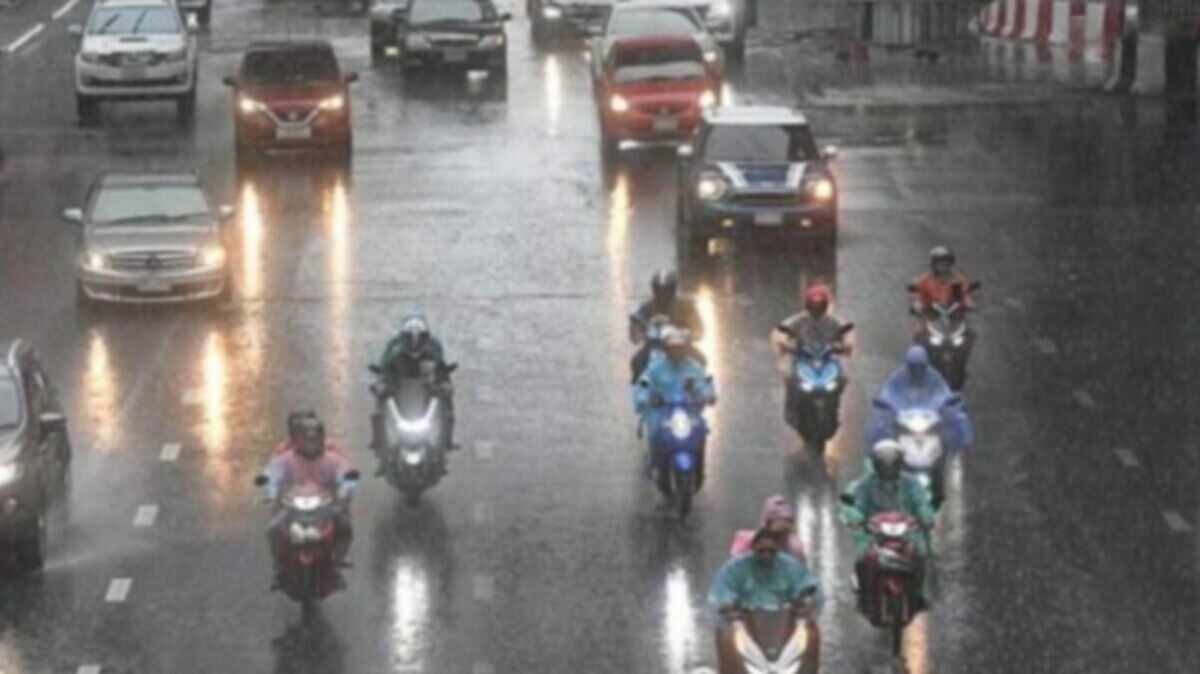Weather alert: Thailand braces for chill in the north, rains in the south

Get ready for a dramatic weather shift as northern and northeastern Thailand is set to feel a temperature dip over the next 24 hours, while the southern regions, including Bangkok, face heavy rainfall and possible flooding.
The Thailand Meteorological Department (TMD) has warned that a monsoon trough will pass through the southern region, bringing moderate to heavy rains to the Gulf of Thailand and the southern provinces. Meanwhile, a cold front sweeping down from China is expected to cool down the northern and northeastern parts of the country by up to two degrees Celsius.
Northern Thailand will experience cool mornings with thunderstorms expected in around 30% of the area. The worst-hit provinces will include Mae Hong Son, Chiang Mai, Chiang Rai, Lamphun, Lampang, and Tak, where strong winds are also forecast. Expect minimum temperatures of 19-23°C and highs between 28-31°C. The mountain tops will be different, with temperatures plunging to a chilly 8-14°C.
Up in the northeast, the cool mornings will be accompanied by gusty winds and a slight temperature drop of 1-2°C. Light rain is expected in certain areas, particularly in the lower parts of the region. Minimum temperatures will hover around 19-23°C, with highs reaching 28-32°C. On the peaks, temperatures will dip to 13-15°C.
Further south, the central region can expect cool mornings too, but thunderstorms will affect up to 30% of the area, especially in provinces like Kanchanaburi, Ratchaburi, Samut Songkhram, and Nakhon Pathom. Temperatures will range from 22-23°C in the mornings to 30-32°C in the afternoon.
In the east, the weather will be similarly cool, with thunderstorms affecting around 30% of the region, particularly in Sa Kaeo, Chonburi, Rayong, and Trat. The temperature will range from 23-25°C overnight, rising to 30-32°C during the day. For beach lovers, be warned: the waves will be up to 1 metre high, and stormy areas could see waves rising to 2 metres.
Southern Thailand is where the real weather drama will unfold. On the eastern coast, thunderstorms will dominate, with up to 80% of the area affected by heavy torrential rain. This includes provinces like Phetchaburi, Prachuap Khiri Khan, Surat Thani, and Narathiwat. Expect minimum temperatures ranging from 22-24°C, with highs between 29-33°C. The sea will be rough, with waves reaching up to 2 metres, and possibly even higher in the storm-affected zones.
On the western side of the southern region, a 60% chance of thunderstorms will cause heavy rain in places such as Ranong, Phuket, Krabi, and Trang. The temperature will range from 23-24°C overnight, rising to 29-33°C during the day. Expect stormy seas, with waves likely to exceed 2 metres in affected areas, KhaoSod reported.
As for Bangkok and its surrounding provinces, the capital is in for a stormy stretch, with 30% of the area likely to see thunderstorms. Minimum temperatures will be around 24-25°C, rising to 31-33°C during the day. Winds from the northeast will reach 10-20 km/h speeds, making it a breezy affair.
So, whether you’re heading to the hills for a chill or braving the downpours in the south, it’s clear that Thailand’s weather is about to turn dramatic – and you might want to pack that raincoat.
What Other Media Are Saying
- Pattaya Mail reports a weather alert from the Thai Meteorological Department for upper and southern Thailand, predicting heavy rain and cooler temperatures from November 3 to 6, urging residents to prepare for possible flooding. (read more)
- The Pattaya News reports on Thailand’s Meteorological Department warning of significant weather changes from today November 6, urging residents to prepare for cooler temperatures and potential flooding in southern regions. (read more)
Frequently Asked Questions
Here are some common questions asked about this news
Why do temperature drops in Northern Thailand coincide with heavy rainfall in the South?
The interplay between a high-pressure system from China and a monsoon trough causes this regional weather disparity.
How might changing monsoon patterns impact Thailand’s agriculture?
Altered rainfall and temperature patterns could affect crop yields, water resources, and farming schedules.
What if temperature fluctuations become more extreme in Thailand’s future?
Extreme weather could challenge infrastructure, impact tourism, and necessitate adaptive strategies for communities.
Why are mountain temperatures significantly lower than other areas in Northern Thailand?
Higher altitudes lead to colder temperatures due to reduced atmospheric pressure and temperature lapse rates.
How does the northeast monsoon influence the climate in Southern Thailand?
It brings moist air from the Gulf of Thailand, leading to increased rainfall and potential flooding in the region.
Latest Thailand News
Follow The Thaiger on Google News:


























